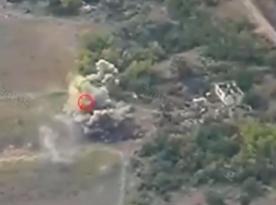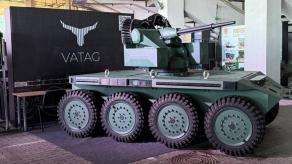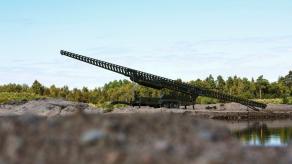The new package of military assistance for Ukraine announced in the United States on December 12th includes a notable addition — air defense system components.
This unusually labeled item, especially listed second in the announcement, is distinct from previous aid packages. Moreover, the equipment comes under the Presidential Drawdown program, allowing for direct withdrawal from the U.S. armed forces' stock without the need to wait for these "components" to be produced by American defense companies.
Read more: FrankenSAM are Already in Ukraine: Capabilities of the Soviet Hybrid Air Defense Systems, Tweaked by US Engineers

Additionally, the list includes a vaguely described item labeled "equipment to protect critical national infrastructure." Coupled with the transfer of AIM-9M missiles, these details suggest that the U.S. is likely providing components for the implementation of the FrankenSAM project, that is, for the creation of hybrid air defense systems in Ukraine.
While this only remains a speculative interpretation because it wasn't directly specified in the official announcement, the indications strongly suggest the transfer of components for the development of close-range air defense systems that will be able to intercept and neutralize air targets within a range of approximately 5 km with AIM-9M missiles.
These systems will be similar to the MIM-72 Chaparral, which employed a modified version of the AIM-9M air-to-air missile to shoot targets from a mobile ground-based launcher.
The decision to transfer only components may be linked to the recent official announcement in Washington about providing technical documentation to start production of certain FrankenSAM projects in Ukraine.
The air defense system featuring AIM-9M missiles appears to be the simplest to integrate compared to other FrankenSAM variants involving the RIM-7 Sea Sparrow adapted for the Buk air defense system or the hybrid of Patriot missiles and launchers with a Ukrainian radar.
The way how these integrations will work remains uncertain, but it could resemble the improvised British air defense system for the AIM-132 ASRAAM air-to-air missile. Notably, the AIM-9 shares similar infrared guidance with the AIM-132 ASRAAM.
To create this unique combat vehicle, a Supacat armored truck chassis was equipped with a miniature radar to ensure a wide field of view, launchers made of aircraft suspension racks and, of course, a missile pre-launch preparation system.

Previously, there were reports of the first FrankenSAMs having arrived in Ukraine already. It wasn't specified whether these systems were produced in the U.S. or right in Ukraine.
This new transfer of components from the U.S. could be aimed to enable local assembly without the need to bring the ready-made systems across the ocean.
Alternatively, there may be an effort to make simpler adjustments to certain Ukrainian close- and short-range systems just to enable these Soviet-era equipment to launch the new missile.
Considering the number of AIM-9 missiles available worldwide, the risk of shortage is minimized, whereas Soviet missiles, once expended, cannot be replaced, and their production is mostly conducted in the russian federation.
It's important to highlight that, along with AIM-9 missiles, "air defense components" and "equipment to protect critical national infrastructure," the $200 million military aid package from the United States includes other items, as follows:
- guided rockets for HIMARS
- 155mm and 105mm artillery rounds
- HARM air-launched anti-radar missiles
- TOW and Javelin ATGMs
- AT-4 grenade launchers
- 4 million rounds for small arms
- explosives, spare parts, generators, etc.
Read more: British Missiles ASRAAM on Supacat Successfully Destroy russian Drones in Ukraine














